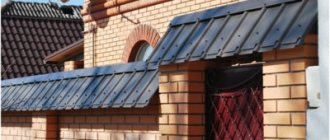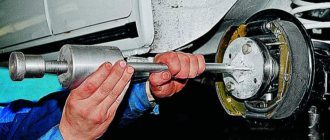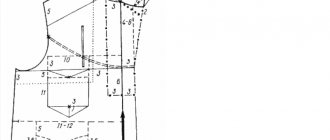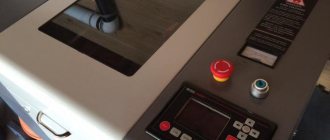It's hard to imagine crushing stones or hammering fasteners without using a tool such as a metal sledgehammer. Using a sledgehammer, various buildings can be dismantled much faster. But due to the increase in the cost of this tool, not every person is able to buy it, and even more so, the quality of the purchased tool raises significant doubts, which is why creating a sledgehammer with your own hands has become very popular.
Sledgehammer device
To understand what a sledgehammer is made of, you just need to see it.
This simplest tool has only two main elements: a striker and a handle. Depending on the model, the materials and dimensions of these parts may vary. Typically, a sledgehammer has a hardened carbon steel head and a straight-grain wood handle (birch, maple, rowan, elm). The weight and dimensions of the tool depend on the area of its application. For forging metal, 2-4 kg with a length of 50-70 cm is enough, and for dismantling work you can use a 16-kg striker on a handle up to 120 cm in length. Unlike a hammer, whose handle tapers from the base, a sledgehammer, on the contrary, expands as it approaches the steel part. The best material for making a handle is considered to be one that has high strength and transmits a minimum of vibrations. Thus, metal or oak handles, although they meet the first requirement, are significantly behind in the second parameter. The least inertial material for the production of handles is currently considered to be composite plastic or fiberglass. To minimize recoil, the grip area is often rubberized.
What will you need?
Materials needed include the following:
A small piece of rubber. Measuring the required size of rubber is quite easy - the length should be slightly longer than the length of the handle, and the width should be the same as its perimeter. It is not necessary to purchase tires separately; you can use an old bicycle tube
It is important to use high-quality rubber without any admixtures of other substances. PVA glue. Any lubricant - lithol is most often used. Pre-made wooden handle of suitable size. It should be oval in cross-section
The handle should gradually narrow towards the place where the striking part is inserted. It is best to make it a little longer than the intended handle. Standard handle length is 250-350 mm. The wooden blank must be pre-dried. Otherwise, after drying, the wood will shrink in size, which can lead to a weak fixation. Hammer. Here this word refers to the striking part of the instrument. Sandpaper and file. Their presence is not required. They are used only to adjust the size of the handle or the striker of the hammer hole.
How to make a striker
Before moving on to the description of the actions, it should be noted that the process of making a sledgehammer head involves forging, which requires special tools, equipment and experience. If you do not have an anvil and a high-temperature furnace, this guide will only be theoretical for you. You can look for the firing pin on classifieds websites or in markets. In any case, its cost will be less than that of a ready-made sledgehammer. Well, for those who are familiar with blacksmithing first-hand, we recommend that you familiarize yourself with the features of the product.
To manufacture the impact element of the sledgehammer, structural carbon steel grades 50, 45, 55, 50G, 50G2 are used. This metal is used in the production of truck axle shafts, so if you don’t have the suitable material, you can look for it at your nearest auto repair shop. To work, you will need a rectangular piece weighing 3 kg, from which you need to forge a parallelepiped.
The next step is to place the handle. To do this, on one side, in the center, we punch a through hole with a diameter of 25 to 30 mm. The sides of the workpiece are deformed. Having freed the hole, it is necessary to forge the side edges so that the object again takes the shape of an even parallelepiped, and the round hole becomes oval.
In order for the attachment point to be most reliable, it must be given a cone shape, tapering from the side edges to the center (in the cross-section of the striker it resembles an hourglass). For this operation, you will need to forge a special calibration rod from cone-shaped steel. The cross-section of the caliber should be oval, and the length should be 180-200 mm. The lower part of the section should be a couple of millimeters narrower than the hole made in the striker, and the upper part is slightly larger than the handle that you are going to install. After forging, the gauge must be hardened and ground.
To properly calibrate the hole, drive the steel rod to a depth just below the center of the striker. When the caliber is deepened, the side faces will be deformed. They need to be straightened by removing the gauge and forging the ends of the workpiece. Next, drive the gauge into the hole again, and without removing it, forge the sides and bead the ends. When the workpiece has the shape of a regular parallelepiped, we repeat the calibration process on the other side of the hole.
When the striker has the correct shape and a reliable attachment point, you can proceed to the hardening stage. In order for the steel to become truly hard, it must be heated to 850 degrees Celsius until the workpiece takes on a bright red color. Once the required temperature is reached, immerse in cold water until cool.
Now that the steel is hardened, it is necessary to give it ductility so that it does not crack during operation. To do this, heat the product to 250-300 degrees and let it cool slowly. After cooling, we grind the metal surface and read how to attach a sledgehammer to a wooden handle.
Forging hammers
Blacksmith hammer with wooden handle. Photo ForgingPRO
In blacksmithing, when performing hand forging, forging hammers are an indispensable tool . They act as an impact factor when forming blanks using the free hot forging method. In the article we will consider their different types depending on the specific application.
Differences between a sledgehammer and a handbrake (hammer) for forging
There are two main groups of forging hammers: sledge hammers and hand hammers. Under the influence of a sledgehammer, the workpiece is deformed using blows . It takes the required form.
The hand hammer plays a specific role in free forging. When working in tandem with a hammer, using a handbrake, the blacksmith indicates the direction of the blow with a sledgehammer.
In addition, the hammer hammer’s partner sets the rhythm of work, which best distributes his physical load.
The hand hammer is also used
for forging small workpieces as a forming tool .
It is important to note : the differences between hammers and sledgehammers are very arbitrary. A blacksmith may well call a small sledgehammer a large hammer. Therefore, we will not focus too much on this terminology further.
Sledgehammers and hammer. Photo Firm Utica
Due to the different functions when performing work, the main differences between sledgehammers and handbrake handles are their weight and dimensions directly related to it . The handbrake hammer weighs from 0.8 kg to 2 kg.
The weight of the sledgehammer is correspondingly greater - from 2 kg to 8 kg. To estimate the overall dimensions of the working part of a 6 kg sledgehammer. Let us give the following data: the size of the side of the base in the form of a square is 70 mm.
, the length of the working part is 175 mm.
What types of hand hammers are there: heavy and light, according to the shape of the head
In addition to differences in mass, hammers are divided according to the shape of the striking part . Sledgehammers have the following shapes, differing in the design of the rear part:
- blunt-nosed;
- sharp-nosed longitudinal;
- pointed transverse.
The blunt-nosed ones are the heaviest, the main task of which is to perform basic forging.
Blacksmith's sledgehammer, blunt-nosed, galvanized steel. Photo ForgingPRO
Handbrake hammers are made with the following shapes:
- spherical;
- longitudinal;
- transverse.
With a wedge-shaped striker, single-sided and double-sided, longitudinal and transverse
Hammers with this type of striker are used in blacksmithing to accelerate the metal of a workpiece , depending on the direction of the wedge - longitudinal or transverse.
Hammers: 1 - with a round back; 2 - sledgehammer; 3 (a) - with a one-sided wedge-shaped back; 3(b) and 4 - with double-sided wedge-shaped tail
With spherical striker
Handbrake hammers with a spherical back are used to obtain rounded shapes like cups. Upon impact, the metal accelerates simultaneously in all directions, and not just in a certain direction, as when processing with wedge-shaped strikers.
With a shifted center of gravity
For work with special control of the amount of hammer rebound during impact, as well as reducing the cost of physical effort , it is recommended to use such a tool with a shifted center of gravity.
Forging hammer with offset center. Photo ForgingPRO
By reducing the moment arm, which deflects the hammer away from the main direction of movement when it comes into contact with an object, the impact load is concentrated at one point.
Ironers
After processing workpieces with a hammer or sledgehammers, unevenness remains at the transition of one processed surface to another. To smooth out such irregularities, a blacksmith's smoothing tool is used. Its working surface is made in the form of a square with a polished working surface.
Blacksmith hammer-smoother. Photo ForgingPRO
Another type of surface, depending on the shape of the workpiece, is a half-cylinder with a radius of 500 mm. Since this type of tool works as a shock absorber, it fits onto the handle without wedging.
Crimping hammers
Crimping hammers are a forging tool for obtaining cylindrical or polyhedral shapes during hot forging . One of the two parts of the crimp is installed on the anvil. The other part, in the shape of a blank, is mounted on a wooden handle, with gradual movements of which it is modified to the required size.
Top round crimp PICARD. Photo ForgingPRO
Failsafe, inertialess
do not cause recoil when struck , and the tool does not rebound from the surface being processed.
The design feature of such a hammer is a hollow head , partially filled with metal balls.
During an impact, the resulting inertial force from the moving mass of balls dampens the elastic vibrations of the interacting metals.
JONNESWAY hammerless forging hammer. Photo ForgingPRO
This eliminates the reason for the hammer to bounce. The proportion of the kinetic energy of the hammer spent on the action being performed increases, and the possibility of injury decreases.
Brass
Hammers with brass heads are used for work that requires minimal deformation of the workpiece processed by impact. Brass is a soft alloy that allows you to carry out work such as shaping sheet metal without affecting its appearance.
Blacksmith hammer made of brass. Photo ForgingPRO
In explosive industries, where sparking is excluded, impact processing is carried out with hammers with a brass head.
With soft strikers
straighten thin sheet metal on an anvil , use hammers with soft strikers. They can be made of polymer or rubber materials . The surface of the sheet after such straightening will remain smooth.
Hammer with soft strikers JONNESWAY. Photo ForgingPRO
Wooden
Wooden hammers (mallets) are more profitable to use when straightening sheet material than rubber ones. They produce a clearer blow , which ultimately affects the quality of work.
Slag removal welding
Removal of the slag crust after welding with coated electrodes or submerged arcs is carried out by impact. A welding hammer is used for this purpose. Its design includes a bump stop with sharp edges and a recoil-absorbing handle. The tool is made from the lightest possible materials.
Slag welding hammer. Photo 220Volt
Regular and reverse entry
To ensure safe operation of the hammer, it must be securely seated on the handle. There are two methods of fastening - the usual one, which is performed by wedging the handle, and the reverse, in which this operation is not performed.
The usual fastening method is more labor-intensive and is used to fasten handles for light hammers. With this method, the instrument retains a more aesthetic appearance.
Small blacksmith hammer without using a wedge. Photo ForgingPRO
The reverse thrust is used for mounting sledgehammers . The head of the sledgehammer fits through the entire handle, which has a reverse cone. It is driven all the way into the extended part of the handle.
The excess part of the handle is cut off, leaving 10...15 mm. for additional tension generated during impact. This type of fastening is more reliable than wedging.
However, when gripping, there is no supporting surface due to the presence of a reverse angle, thereby making it difficult to hold the sledgehammer.
How to calculate the length of the handle for yourself
Each worker in the forge selects hand hammers and sledgehammers individually for himself. For this, the elbow length of an individual worker is used .
The smallest loads, while maintaining optimal impact force, are tested when the grip of the handle is located in the middle between the head of the hammer and the elbow joint.
Therefore, when choosing the length of the hammer handle, the head is squeezed into the palm of one hand and the free end of the handle should touch the inner surface of the elbow. This type of hammer will be the most ergonomic to use.
Below is a video where the master shares practical details about hammers.
DIY sledgehammer handle
A very easy-to-make wooden handle for a sledgehammer is considered the least inertial and durable if you choose the right material. The most suitable types of wood for handles are birch, elm, rowan, maple or ash. It is desirable that the source material is split, not sawn, and does not have knots. You can take an ordinary block, but the strength will be lower. The length of the handle depends on your requirements, but on average, for a striker weighing 3-4 kg, 600-800 mm is enough.
The first and most important step in the process of creating a handle for a sledgehammer with your own hands will be to trim the workpiece with a plane, ax or other suitable tool. The thickness of the handle should gradually increase from the beginning (the grip point) to the end (the place where the striker is attached), the size of which should be slightly larger than the size of the hole in the striker being put on. For maximum strength, the handle must have a stiffening rib, so its shape should be oval, not round.
What will you need?
Materials needed include the following:
A small piece of rubber. Measuring the required size of rubber is quite easy - the length should be slightly longer than the length of the handle, and the width should be the same as its perimeter. It is not necessary to purchase tires separately; you can use an old bicycle tube
It is important to use high-quality rubber without any admixtures of other substances. PVA glue. Any lubricant - lithol is most often used. Pre-made wooden handle of suitable size. It should be oval in cross-section
The handle should gradually narrow towards the place where the striking part is inserted. It is best to make it a little longer than the intended handle. Standard handle length is 250-350 mm. The wooden blank must be pre-dried. Otherwise, after drying, the wood will shrink in size, which can lead to a weak fixation. Hammer. Here this word refers to the striking part of the instrument. Sandpaper and file. Their presence is not required. They are used only to adjust the size of the handle or the striker of the hammer hole.
Communities › DIY › Blog › Hammer handles. Made of oak and beech.
Surely many people have had to make a handle for a hammer. Until recently, I remember their regular flat ones. But lately I've been buying hammers with more complex shapes. I had no idea before that a hammer could be so convenient. True, the metal on them was terrible. It chips. It's dangerous to work like that. And the quality of the wood is not high sometimes. The shape of the hole in the head is also to blame. It is no longer punched by a forge, but is drilled and milled. That's why it's flat. Therefore, the handles become loose and do not last long. I got hold of several old Soviet hammer heads. And he made handles for them.
And I’ll tell you a little about him. I also compare oak and beech wood. Their suitability as a hammer handle.
Description and photo: what is it used for in the country
Externally, a sledgehammer resembles a hammer, has a two-handed design and is used for power processing of various objects and structures. Most often it is used for the following purposes:
- Dismantling of building structures (foundation, walls, partitions, concrete structures), technical structures, metal structures. Often a sledgehammer is used at a dacha to demolish old buildings and clear a site for construction.
- Uprooting. Using a sledgehammer, it is convenient to break large boulders, remove old stumps that interfere with planting new plants or landscaping the area, and remove other large debris dug into the ground.
- Construction works. The sledgehammer can be used to drive in reinforcing pins, staples, wooden wedges, thick nails, piles and posts; Most often, such work is used in the construction of wooden, block and brick houses or extensions. As a rule, a tool with a toothed striker is used for this purpose.
- Body repair of cars and agricultural machinery. It is often used in the process of straightening and manufacturing tin or steel parts as a striking tool, which allows you to give the product the desired shape.
Recommendations for performing the exercise
To get the most out of your CrossFit or MMA training with sledgehammer and tire exercises, it is recommended to follow these simple tips:
- Perform two to four sets of tire sledgehammer hits per workout. Time under load is important here. Two to two and a half minutes of continuous intensive work is the indicator you should strive for. During this time, a trained athlete will have time to make at least a hundred powerful blows.
- Monitor your pulse. This exercise greatly relieves the psyche and relieves stress. With its help, you can easily get rid of excess negativity from your head, but sometimes it can be difficult to stop. If after approaching you start to tingle in your temples or in the back of your head, this is not normal. In this case, the intensity should be reduced slightly.
- Don't round your back when hitting. Even though a sledgehammer usually weighs about 10 kg, the risk of spinal injury is quite high due to the explosive manner of execution.
- Be sure to warm up before performing this exercise. It is performed in an explosive manner, which means that the risk of some kind of damage is always present. A couple of sets of pull-ups, push-ups, hyperextensions, joint exercises and a little cardio are what you need.
- Watch your breathing. The blow should occur while exhaling, the swing with a sledgehammer should occur while inhaling. Not the other way around. If you lose your breathing pace, it is better to take a short break and start over. Improper breathing will result in much less oxygen entering the body, muscles will quickly get tired, and blood pressure will also rise.
- To experience the full benefits of this exercise, it is recommended to do it at least three times a week. This is a great cardio option after strength training. A 10-minute series of tire hits with short rest intervals will replace the monotonous 40 minutes of walking on a treadmill.
Process of creation
Since the sledgehammer is included in the forged tools section, you need to take a metal blank weighing about 2 kilograms and forge a parallelepiped from it. People who have their own summer cottage or live in a private house should consider taking a workpiece weighing 5-10 kilograms; such a sledgehammer is suitable for large-scale construction work.
A through hole with a diameter of 20-25 millimeters is sewn in the middle of one of the sides located on the side. After completing these steps, you can notice how the planes on the sides have changed. They need to be forged so that the metal blank becomes an absolute parallelepiped, and the circle-shaped hole becomes an oval.











